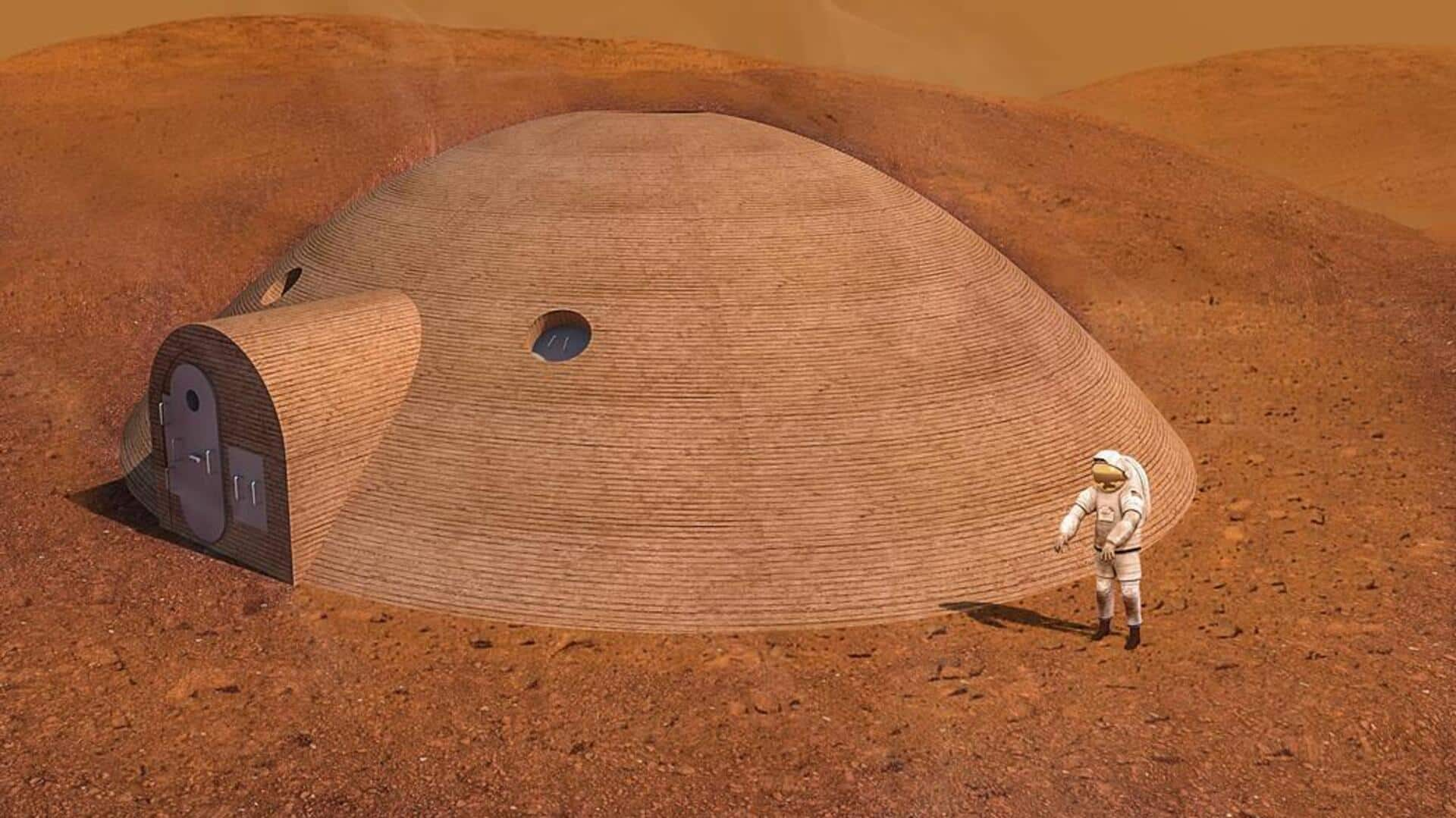
Microbes could turn Mars dust into buildings: Here's how
What's the story
The dream of living on Mars is no longer just a sci-fi fantasy. Successful landings on the Red Planet over the past few years have made this idea more realistic than ever. But before we start packing our bags, there's a major hurdle to overcome: how to construct buildings millions of miles away from Earth. Scientists may have found a solution using synthetic lichen systems that utilize Martian soil, dust and rocks to autonomously 3D print structures.
Innovative technology
Research funded by NASA's Innovative Advanced Concepts program
A team led by Dr. Congrui Grace Jin from Texas A&M University has been working on bio-manufacturing engineered living materials for years. Their synthetic lichen system can create building materials without any external intervention. The research, funded by NASA's Innovative Advanced Concepts program, was published in the Journal of Manufacturing Science and Engineering. This technology could revolutionize off-world construction by allowing structures to be built in harsh environments with limited resources.
Operational details
How the synthetic lichen system works
The synthetic lichen system uses heterotrophic filamentous fungi as bonding material producers. These fungi can generate large amounts of biominerals and survive harsh conditions better than heterotrophic bacteria. They are paired with photoautotrophic diazotrophic cyanobacteria to create the synthetic lichen system. The cyanobacteria fix carbon dioxide and dinitrogen from the atmosphere, converting them into oxygen and organic nutrients for fungal survival and growth.
Self-sustainability
Next step is to create regolith ink for 3D printing
The synthetic lichen system grows with just Martian regolith simulant, air, light, and an inorganic liquid medium. This means it doesn't need any external help or nutrients. "The potential of this self-growing technology in enabling long-term extraterrestrial exploration and colonization is significant," says Dr. Jin. The next step in the project is to create regolith ink for 3D printing bio-structures using direct ink writing technique.